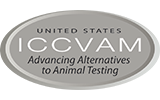Profiling Activity of Acetylcholinesterase Inhibitors
Acetylcholinesterase inhibitors cause a variety of adverse effects in the nervous system. Some acetylcholinesterase inhibitors serve as drugs, while others are used as pesticides or found in natural products. Scientists at FDA, EPA, and NCATS developed acetylcholinesterase inhibition assays (Li et al. 2017, 2019). These assays were then used to screen the Tox21 10K chemical library to identify environmental chemicals that inhibit acetylcholinesterase activity (Li et al. 2021). The screening study, which included NIEHS scientists and other collaborators, identified both known and not previously reported acetylcholinesterase inhibitors, which were further characterized in lower-throughput cell-based assays, enzyme-based activity assays, and molecular docking studies. Specifically, this study identified 18 potential novel acetylcholinesterase inhibitors, most of them clinically approved drugs. Cmax values, which represent the highest concentration of a drug in the blood or target organ after a dose, were found from the literature for 14 drugs. These were compared with half-maximal inhibitory concentration (IC50) values generated from this study (Santillo and Xia, 2022). The ratio of IC50 and Cmax can be used to prioritize the compounds for further study. This represents a robust and reliable approach to evaluating large sets of environmental compounds for their acetylcholinesterase inhibitory activity.



